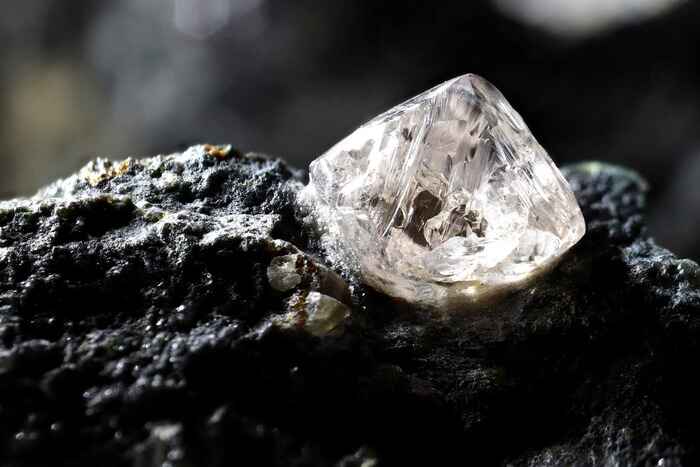hardness of diamonds
in the diamond crystal structure, there are virtually no free bonds – no free electrons, no unjoined connections. on the surface, only about one bond in 1000 ” dangles in space “. imagine a girder bridge with some of the bolts and rivets missing so that ties and struts stick out and are only joined at one end. most materials are like that, but not diamonds.
this structure makes the diamond not only hard but gives it enormous compressive strength. it will stand a force of 1.25 million tons per square inch, while silicon carbide fails at a fifteenth of that pressure.
thus hardness can be defined as the ability of a mineral to resist abrasion when scratched by another mineral.
moh’s hardness scale:
- talc
- gypsum
- calcite
- fluorite
- apatite
- orthoclase fel
- quartz
- topaz
- corundum
- Diamond

significance of diamond hardness
the property of hardness in diamond is important in its attractiveness, as a gem and its cutting efficiency as an industrial mineral. it can also be means of identification. resistance to abrasion is significant in a gemstone as any scratch or wear will impair the luster, transparency, and brilliance and ultimately affect the color. the fact that the diamond is so hard enables it to be highly polished to its adamantine luster and for the edges of each to be, and remain sharp and true. in addition, because of hardness and other properties, diamond value, as an industrial tool is incalculable. modern industry is largely dependent on the industrial diamond.
visual estimation of diamond hardness
- flat facets
- high polish
- high luster
- knife sharp facet edges
toughness of diamonds
the toughness of diamonds is the ability of a mineral to withstand disruption and force. diamond is very tough if squeezed in a vice and will withstand extreme confining pressure. it is not so resistant to shock and under a heavy blow, it will fracture. in order words, it is quite brittle much more than nephrite jade, but not so brittle as glass or pastes used in jewelry.
the specific gravity of diamonds
the density of a substance is the mass contained in a unit volume of the substance. the specific gravity, is the density of a body compared with standard, generally water at 4~ c. in a diamond, the carbon atoms are bonded very closely to each other. linked equally to four other carbon atoms in a very tight and compact mass. this closed formation makes diamonds a dense and relatively heavy material. the specific gravity of diamonds is -3.52
methods of ascertaining s.g. ( hydrostatic – heavy liquid, heft estimation )
cleavage of diamonds
cleavage is a property of many crystals, which enables them to be divided along a plane with comparative ease. diamond can be cleaved along the octahedral planes. powerful forces hold the atoms together that we can visualize, atomic bonds, and all the bonds are the same length as explained earlier. however, some planes in the crystals are crossed by fewer bonds in a given area than other planes. in other words, the bond density is different in different planes.
in a plane with low bond density, relatively few bonds cross the plane. the crystal will be weaker and will be susceptible to splitting or cleavage.



